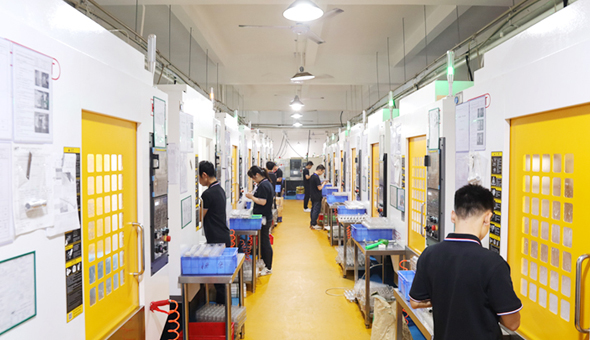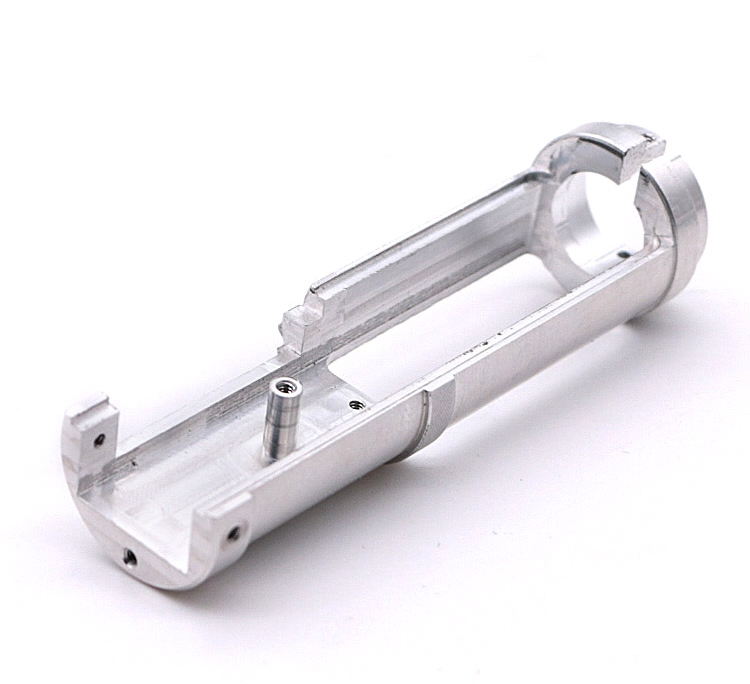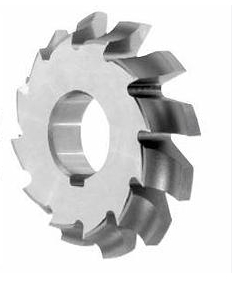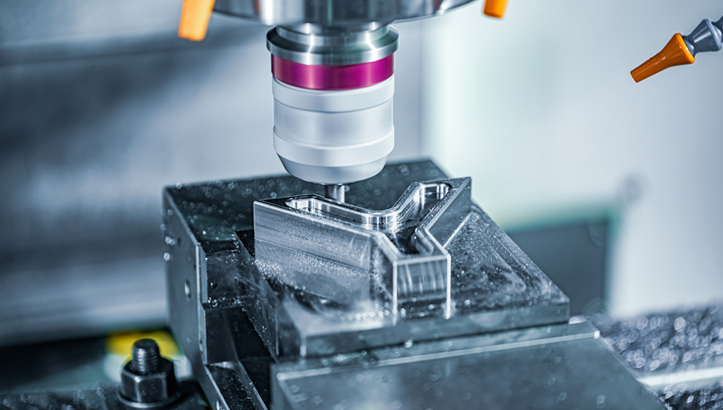What is Form Milling? How Does it Work?
Are you struggling to achieve high precision in machining complex shapes? Form milling could be your ultimate solution. This advanced machining technique is revolutionizing industries by enabling the production of intricate profiles with unmatched accuracy. In this comprehensive guide, we’ll explore what form milling is, how it works, its applications, advantages, and why it’s a game-changer for precision manufacturing.
Form milling is a specialized machining process that uses custom-designed cutters to create precise and complex profiles on materials. By leveraging CNC machines and advanced form cutters, this method ensures efficient production of intricate shapes with tight tolerances. From automotive gears to medical implants, form milling is the go-to solution for industries requiring high precision and repeatability.
Let’s explore the principles, applications, and advantages of form milling to understand why it’s a critical process in modern manufacturing.
What is Form Milling?
Form milling is a machining technique that employs specially designed form cutters to carve out specific profiles, contours, or shapes on a workpiece. Unlike conventional milling, which focuses on flat or simple geometries, form milling is tailored for precision applications. This makes it indispensable in industries where detail, accuracy, and repeatability are paramount.
How Does Form Milling Work?
The form milling process involves several critical steps to achieve precision and efficiency:
1. Tool Selection:
The first step is choosing the right form cutter. These cutters are custom-designed to match the exact profile of the desired shape. Based on the workpiece material and machining requirements, materials like carbide, high-speed steel, or ceramic are selected.
2. Workpiece Setup:
The workpiece is securely clamped onto the CNC machine table to prevent any movement during machining. Proper alignment is crucial to ensure accuracy.

3. CNC Programming:
A CAD model of the desired shape is converted into a CNC program. This program dictates the toolpath, cutting speed, and depth of cut.
4. Cutting Process:
The CNC machine executes the programmed toolpath, guiding the form cutter to carve the required profile. Advanced CNC systems allow for multi-axis machining, enabling the creation of highly complex shapes in a single setup.
5. Finishing and Inspection:
After machining, the workpiece undergoes finishing processes to achieve the desired surface quality. Precision measurement tools, such as CMMs, verify that the final product meets the specified tolerances.
What is Form Milling Used For?
Form milling is widely used across industries that demand high precision and complex geometries. Some key applications include:
Automotive Industry
In the automotive sector, form milling is used to manufacture custom gears, camshafts, crankshafts, and intricate molds for body panels. These components require tight tolerances and precision to ensure smooth vehicle operation and durability. Form machining is also critical for crafting suspension parts and engine components that meet safety and performance standards.
Medical Equipment Industry
The medical industry relies on form milling for producing surgical tools, orthopedic implants, and prosthetic parts. The process ensures biocompatibility and precision, enabling medical devices to function effectively. For example, titanium implants and stainless-steel surgical instruments are machined with high accuracy to meet the strict requirements of medical applications.

Electronics Industry
In electronics, form machining is essential for crafting connectors, housings, heat sinks, and micro-components. This process ensures that products like smartphones, wearables, and laptops meet high standards of precision and durability. By using advanced form tooling, intricate designs are achieved, improving the performance and reliability of electronic devices.
Industrial Machinery
The industrial machinery sector benefits from form milling by producing rotors, blades, dies, and wear-resistant components. These parts are vital for heavy machinery operations, ensuring reliability and longevity under demanding conditions. The ability to mill specialized machine components makes form machining indispensable in this industry.
Aerospace Industry
Aerospace manufacturing relies on form milling for creating turbine blades, wing components, landing gear parts, and other high-precision parts. The process ensures compliance with strict industry standards, crafting lightweight and durable components essential for flight performance and safety. CNC forming technology plays a key role in maintaining the required accuracy.
Tooling Industry
The tooling industry uses form milling to produce custom tools, such as dies, punches, and cutting tools. These components are critical for various manufacturing processes, offering specialized solutions through the use of custom form cutters cadn download and advanced machining techniques.
Energy Sector
In the energy sector, form milling is used to produce components for wind turbines, hydroelectric systems, and oil and gas equipment. For instance, blade hubs and high-pressure fittings are crafted to exacting standards to ensure efficiency and reliability in renewable energy and fossil fuel applications.
Consumer Goods
From household appliances to sporting goods, form milling enables the creation of high-quality components. Precision machining of parts for blenders, washing machines, bicycles, and golf clubs ensures performance, durability, and user satisfaction.
Materials Used for Manufacturing the Form Milling Cutting Tools
Form milling cutting tools are crafted from robust materials designed to withstand the stresses of high-precision machining. Common materials include:
High-Speed Steel
High-speed steel is a widely used material for form cutters, valued for its toughness and resistance to wear. It is particularly effective in high-speed applications where the tool must endure substantial cutting forces without chipping or breaking. HSS tools are also cost-effective, making them a popular choice for general form machining tasks.
Tungsten Carbide
Tungsten carbide is renowned for its exceptional hardness and durability, ensuring an extended tool life even under demanding conditions. It is especially suitable for cnc forming operations on tough materials like stainless steel, titanium, and superalloys. Carbide tools maintain their cutting edges for longer periods, improving productivity and reducing downtime.
Ceramic
Ceramic tools are designed for high-temperature applications, where traditional materials might fail. They are particularly effective in machining hard metals at high speeds, offering excellent heat resistance and wear resistance. Ceramic form tooling is commonly used in industries such as aerospace and automotive, where high-speed performance is critical.
Powdered Metal Alloys
Powdered metal tools are made from finely powdered materials fused under high heat and pressure. These tools offer a balance between cost and performance, providing high wear resistance and toughness. They are suitable for producing custom form cutters cadn download for specialized machining applications.
Diamond-Tipped Tools
Diamond-tipped cutting tools are unparalleled in hardness and wear resistance. They are used for milling profiles on ultra-hard materials like composites, ceramics, and non-ferrous metals. Diamond-tipped tools are ideal for applications requiring precision and a flawless surface finish.
Coated Materials
Many cnc milling cutters are enhanced with advanced coatings, such as titanium nitride (TiN), titanium carbonitride (TiCN), or aluminum titanium nitride (AlTiN). These coatings improve heat resistance, reduce friction, and extend tool life, making them ideal for high-speed machine form operations.
By utilizing these diverse materials, form milling cutting tools achieve the durability, precision, and performance required across various industries and machining tasks.
What are The Advantages and Disadvantages of Form Milling?
Advantages of Form Milling
1. High Precision
Form milling achieves exceptionally tight tolerances, often as low as 0.01 mm. This precision makes it indispensable for applications where accuracy is critical, such as aerospace components, medical implants, and custom gears. By using advanced form cutters and cnc forming techniques, manufacturers can ensure flawless results.
2. Efficiency
Form milling reduces production time by creating intricate shapes in a single pass. This eliminates the need for multiple machining steps, boosting overall productivity and reducing labor costs. It’s particularly beneficial in mass production environments where time efficiency is essential.
3. Versatility
The process can handle a wide variety of materials, including metals like aluminum, steel, and titanium, as well as plastics and composites. This flexibility allows industries ranging from automotive to electronics to utilize form machining for diverse applications.
4. Complex Geometries
Form milling excels at producing complex profiles, contours, and intricate designs that would be challenging or impossible with other machining methods. This makes it ideal for products requiring detailed features, such as molds, dies, and turbine blades.
5. Cost-Effective for Large Runs
Although the initial setup can be expensive, form milling becomes cost-effective in large-scale production due to reduced labor and faster machining times. The use of custom form cutters cadn download ensures efficiency in repeated operations.
Disadvantages of Form Milling
1. Tool Cost
Custom-designed form cutters can be expensive to manufacture. This upfront investment can be a barrier for small businesses or low-volume production runs. High-quality materials like carbide or diamond-tipped tools further increase costs.
2. Skill Requirement
Form milling requires skilled operators and programmers to achieve optimal results. The process involves precise setup, programming, and monitoring, which can be challenging for inexperienced teams. Training and expertise are essential to fully utilize the capabilities of form tooling.
3. Wear and Maintenance
High-speed operations and machining of hard materials can lead to tool wear. Frequent maintenance or replacement of cnc milling cutters is necessary, which can add to operational costs.
4. Material Restrictions for Certain Tools
While form milling is versatile, certain materials, like hard ceramics, may require specialized tools like diamond-tipped cutters. These tools are not only expensive but also require specific machine capabilities.
Types of Form Milling Cutters
Form milling cutters come in various shapes and sizes to suit different applications. These cutters are essential for specialized tasks like face milling, profile milling, and angular milling. Each type of cutter is designed to achieve specific geometries, ensuring precision in machining. Below are the most common types of form milling cutters:

1. Single-Angle Cutters
Single-angle form milling cutters feature a single cutting edge at a specified angle, making them ideal for chamfering, grooving, and creating angled profiles. These cutters are commonly used in applications requiring precise bevels or slots, such as preparing gear teeth or crafting angled surfaces in molds. Their versatility extends to both metal and plastic materials. These cutters are particularly effective in profile milling applications where precision and reliability are critical.
2. Double-Angle Cutters
Double-angle form milling cutters have cutting edges on both sides, allowing them to machine V-shaped grooves and other symmetrical profiles. These cutters are particularly useful for deburring, chamfering, and cutting notches in components such as shafts and connectors. The dual-edge design significantly improves milling efficiency, particularly in operations that require a form mill cutter to handle tasks quickly and with minimal tool wear.
3. Concave Cutters
Concave form milling cutters are specifically designed to create inward-curved profiles, such as grooves and hollowed-out sections. These tools are essential for manufacturing components like pulleys, gears, and bearings, where smooth, rounded internal profiles are required. Their precision ensures a high-quality finish for components that demand intricate inward curves. These cutters excel in profile milling for applications where consistent radii and accuracy are essential.
4. Convex Cutters
The opposite of concave cutters, convex form milling cutters are used to produce outward-curved surfaces. They are ideal for crafting components with domed or rounded external profiles, such as decorative edges, mold components, and parts for optical devices. The precision of these cutters guarantees accurate dimensions and smooth finishes, making them highly valuable in angular milling and applications where external contours must be precisely controlled.
5. Thread Milling Cutters
Thread milling cutters are designed specifically for cutting internal or external threads in a workpiece. Unlike traditional taps and dies, these form mill cutters allow for the machining of threads with variable pitch, diameter, and depth in a single operation. They are highly versatile, suitable for materials like titanium, aluminum, and hardened steel. These cutters offer superior thread quality and are commonly used in profile milling for applications where thread consistency and flexibility are paramount.
6. Corner Rounding Cutters
Corner rounding cutters are used to round off the edges of workpieces, providing a smooth transition between surfaces. They are frequently applied in the finishing stages of components like brackets, housings, and frames to improve aesthetics and reduce sharp edges. These cutters are also effective in face milling, particularly when working on larger components requiring a clean, rounded finish along the edges.
7. T-Slot Cutters
T-slot cutters are specialized form milling cutters used to machine T-shaped grooves. These are commonly found in machine tool tables and assembly fixtures. Their unique shape and functionality ensure precision and efficiency when creating these critical features. The ability to accurately mill T-slots makes these cutters indispensable in both angular milling and profile milling for applications requiring exacting standards for slot dimensions.
8. Gear Milling Cutters
Gear milling cutters are specifically designed for machining gear teeth and other gear-related profiles. These cutters are crucial in industries such as automotive, aerospace, and industrial machinery, where gears play an integral role in performance. Form mill cutters used for gear milling are highly specialized to handle the complex geometries required in gears, making them indispensable for profile milling and face milling in gear manufacturing.
9. Custom Form Cutters
Custom form cutters are tailored to meet specific machining requirements. These form milling cutters are designed using advanced CAD software to precisely match the desired profile. Custom cutters are widely used in industries with unique or complex design needs, such as medical implants or turbine blades. Their ability to create intricate shapes in a single pass makes them essential in profile milling and highly detailed angular milling tasks.
Form Milling vs. Other Types of Milling
Form milling is a specialized machining process that excels in creating complex, intricate profiles, making it distinct from other milling techniques. Below, we explore how form milling compares to other common milling methods, highlighting its unique advantages and limitations.
1. Form Milling vs. Flat Milling
Flat milling, also known as surface milling, is primarily used to cut flat surfaces and simple geometries such as slots and grooves. It is often employed for creating smooth, level surfaces on workpieces, but it is limited to producing basic shapes and structures. In contrast, form milling allows for the creation of highly intricate shapes and complex profiles in a single pass, thanks to specialized form cutters. The precision achieved in form milling is also far superior, with tolerances as low as 0.01 mm, making it ideal for industries like aerospace, medical devices, and automotive, where high accuracy is essential.
Key Difference: While flat milling focuses on flat, simple surfaces, form milling is capable of machining complex contours, curved surfaces, and 3D profiles that flat milling cannot achieve.
2. Form Milling vs. Slot Milling
Slot milling is used to create narrow grooves or slots in workpieces, typically with a straight cutting edge. It is most commonly applied in parts like keyways, gears, and slots that do not require complex geometries. While slot milling is highly efficient for these specific tasks, form milling is much more versatile, capable of producing a wider variety of shapes, including concave, convex, and rounded profiles. This versatility in design makes form milling the preferred choice for applications requiring complex features such as molds, dies, and custom gears.
Key Difference: Slot milling is limited to creating simple slots and grooves, while form milling is capable of machining a wide range of intricate, custom-designed profiles.
3. Form Milling vs. Contour Milling
Contour milling involves the machining of parts with curved or irregular shapes, but it often requires multiple passes or different tools to achieve the desired geometry. In contour milling, the toolpath follows the outline of the part to achieve its shape. While contour milling can produce smooth curves, form milling takes this one step further by using custom form cutters to directly produce these complex profiles in one pass. The precision of form machining ensures smoother surfaces and more intricate designs than contour milling, especially when parts need to conform to tight tolerances.
Key Difference: Form milling excels in creating highly complex and intricate contours in a single pass with precision, whereas contour milling might require additional operations or tools to achieve the same result.
4. Form Milling vs. Drilling
Drilling is a subtractive manufacturing process focused on creating round holes in a workpiece. It is typically used for boring holes in materials and is not designed to produce complex shapes. In contrast, form milling is ideal for creating complex profiles and detailed geometries, including shapes that are impossible to achieve with drilling alone. Additionally, form cutters allow for flexibility in creating varying depths and profiles that cannot be achieved by traditional drilling methods.
Key Difference: Drilling is limited to hole-making operations, while form milling can produce highly detailed and varied profiles, making it far more versatile for complex part geometries.
5. Form Milling vs. Face Milling
Face milling is commonly used for machining flat surfaces and is effective for removing large amounts of material from the surface of a workpiece. While it is often used for general-purpose machining and finishing tasks, face milling cannot achieve the intricate details and shapes that form milling can. In form milling, the cutting tool is designed specifically to create complex shapes, such as concave or convex profiles, while face milling tools are flat and generally restricted to simple surface finishes or shallow cuts.
Key Difference: Face milling is optimized for flat surfaces and basic geometric shapes, whereas form milling is designed for specialized, intricate forms requiring custom tools and high precision.
6. Form Milling vs. Gear Milling
Gear milling is a highly specialized form of milling used for cutting teeth into gears, which requires specialized cutters like involute gear cutters. While gear milling is focused exclusively on gear production, form milling is more versatile and can be used to create a broad range of complex shapes, including gears, cams, and molds. Form milling cutters, such as custom form cutters cadn download, can be tailored to produce specific gear profiles or any other intricate design, making it a flexible choice for gear production.
Key Difference: Gear milling focuses on cutting gears, while form milling offers a broader range of applications for custom parts, including gears, molds, and other detailed profiles.
7. Form Milling vs. CNC Milling
CNC milling is a computer-controlled machining process that can be used for a variety of milling operations, including face milling, contour milling, and form milling. The main distinction is that CNC milling is a broad term that encompasses all types of milling operations controlled by computer numerical control, whereas form milling is specifically aimed at creating complex profiles with precision using custom-designed form cutters. CNC milling machines can perform various operations, but form milling is particularly specialized for creating intricate and highly detailed geometries.
Key Difference: While CNC milling encompasses a range of milling types, form milling specifically refers to the use of custom-designed cutters to create complex profiles, offering high precision for specialized tasks.

8. Form Milling vs. Turning
Turning is a process used to create cylindrical shapes by rotating the workpiece while a cutting tool removes material. Unlike milling, which involves rotating the cutter, turning is typically used for creating parts like shafts, rings, and other round shapes. Form milling is better suited for creating complex, non-cylindrical profiles and geometric designs with high precision, such as molds and intricate camshaft designs. Additionally, form cutters used in milling provide the flexibility to produce a wide range of shapes that turning cannot.
Key Difference: Turning is used for creating cylindrical parts, while form milling can produce complex, detailed shapes with precision that cannot be achieved by turning alone.
Choosing the Right Form Milling Cutter
When selecting a form milling cutter, it’s important to consider several factors to ensure optimal performance and cost-effectiveness. Here are the key points to keep in mind:
1. Material Compatibility
Choose a cutter material that matches the hardness and abrasiveness of the workpiece. For tougher materials like stainless steel, carbide cutters are recommended for their durability. For softer materials, high-speed steel cutters can offer a good balance of cost and performance. For high-temperature applications, ceramic cutters are ideal due to their heat resistance.
2. Cutter Design
The cutter design should match the shape you need to create. Whether it’s a concave, convex, or custom form cutter, make sure the tool is suited for the desired profile. Custom cutters may be necessary for complex shapes or specialized applications like gears and molds.
3. Machining Speed
Select a cutter that can handle the required cutting speed for your material. Carbide cutters are best for high-speed machining, but for tougher materials, slower speeds might be needed to avoid damage. Balancing speed with tool life is key.
4. Quality and Durability
Invest in high-quality cutters to avoid frequent replacements and downtime. Carbide or ceramic cutters are more durable, offering better performance and longer tool life. While they may cost more upfront, they reduce overall operational costs in the long run.
5. Tool Coatings
Coatings like titanium nitride can enhance a cutter’s wear resistance and reduce friction. This is particularly useful for machining harder materials or when high cutting speeds are needed.
Why Choose VMT for Your Form Milling Needs?
VMT is a reliable choice for your form milling requirements, providing exceptional precision with tolerances as low as 0.01 mm. We offer free CAD design support to create custom form cutters tailored to your needs, ensuring the best fit for your project. With our efficient processes, you can count on fast delivery, receiving your tools within 24 hours.

In Conclusion
Form milling is a powerful machining technique that combines precision, efficiency, and versatility to create complex profiles across various industries. By leveraging advanced CNC machines and custom form cutters, it delivers exceptional results for even the most challenging machining tasks. Whether you’re in automotive, medical, or aerospace, form milling is the key to unlocking new levels of precision and productivity.
More Resources: 12 Types of Milling Operations: Definition, Types, Applications
CNC Milling Guide: Definition, Working Principle, Applications
Frequently Asked Questions About Form Milling
What Are the Three Types of Milling?
The three main types of milling are:
Horizontal Milling: Uses a horizontally oriented cutter to remove material, ideal for heavy-duty cutting and large parts.
Vertical Milling: The cutting tool is mounted vertically, commonly used for smaller parts and detailed work.
Universal Milling: Combines features of both horizontal and vertical milling machines, offering flexibility for complex operations.
What is Process Milling?
Process milling refers to the method of removing material from a workpiece using a rotating cutter to shape or size it. This is done by moving the cutter into contact with the material, which is typically a metal, plastic, or wood. Process milling includes different operations like face milling, slab milling, and contour milling to achieve the desired result.
What is FOMM in Machining?
FOMM stands for “Factory of the Future Manufacturing Model”, a concept in machining and manufacturing that focuses on automation, advanced technologies, and smart factories. It emphasizes integrating cutting-edge technologies, such as robotics, AI, and IoT, to improve efficiency, flexibility, and precision in the production process. FOMM is aimed at creating adaptive and sustainable manufacturing environments.
What is the Milling Process?
The milling process involves the use of rotating cutters or abrasive tools to remove material from a workpiece, often in the form of chips. It is used to shape, size, and finish materials such as metal, wood, and plastic. Milling can be done horizontally or vertically, and it is a crucial operation in both manufacturing and machining.
What is Milling in Manufacturing?
Milling in manufacturing refers to a machining process where a rotating cutter removes material from a workpiece. This can shape metal, plastic, or other materials into precise forms. Milling is commonly used to create complex parts, slots, holes, and surfaces with high accuracy in industries like aerospace, automotive, and electronics.



